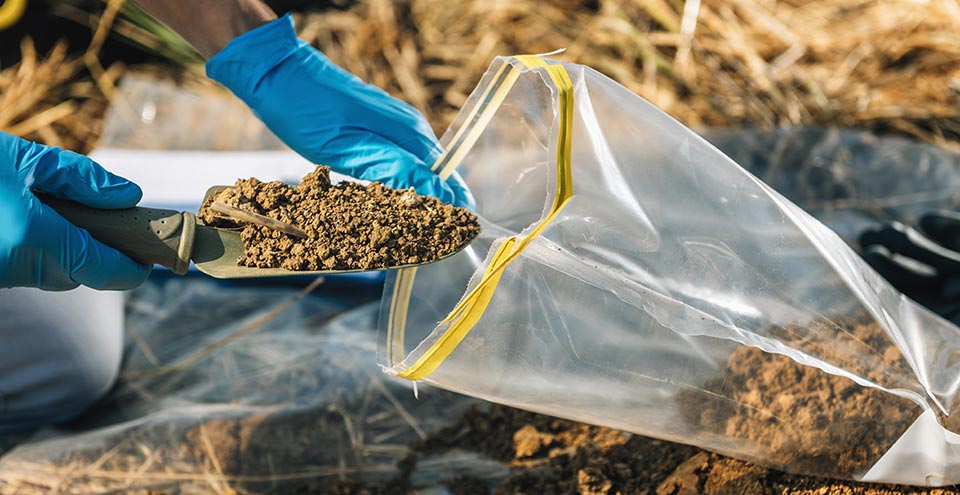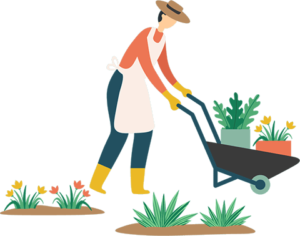What Can I Do?
Practice Prevention
Pick the right plants
Choose plants that grow well in your area/soil. Pay attention to plant hardiness zones. Plant pest-resistant varieties when available. Try planting a few early-blooming, mid-season, and late-blooming plants, to attract and support beneficial insects and spiders throughout the growing season.
Encourage vigorous growth
Healthy plants are less susceptible to pests than plants stressed by too little or too much water, too much shade, or the wrong soil conditions. You might want to send a sample of your garden or lawn soil to a soil-testing service. They can tell you what and how much fertilizer or compost it needs to grow strong healthy plants. When rain is not in the forecast, keep gardens and lawns healthy and pest-resistant by watering deeply but infrequently. Established plants only need watering once or twice a week. Newly planted seed or transplants may need watering more often. Water only the plant roots and early in the morning, if possible. For lawns, even a simple adjustment to your lawnmower to the highest setting will help grasses fend off weeds and insect pests.

Send a sample of your garden or lawn soil to a soil testing service to get recommendations on type and amount of fertilizer, compost or amendments your soil needs to grow healthy pest-resistant plants.
Ask for Help
Luckily, most of the pests you encounter are common. Contact your county Extension office or the University of Maine Cooperative Extension Pest Management Unit for help in identifying pest problems. Once the issue has been identified, your Extension office or a trained Master Gardener can recommend an IPM solution to address the problem now and prevent recurrence.
Use Pesticide Products Wisely
Some pesticide products can be very toxic to people, pets, or the environment – even ‘natural’ or ‘organic’ ones. If pesticide use becomes necessary, select a product carefully and use it wisely. The type of active ingredient, formulation (spray, versus granules, versus powder) and application timing, rate, site, and equipment all affect product effectiveness and risk (to you, your pets, and the environment). Target the pest when and where it is vulnerable and select products that are the lowest risk for you and the environment. Always apply pesticides on the smallest areas possible, to target the pest where it is found and to reduce potential exposure to people, pets, and wildlife.
The National Pesticide Information Center is a good resource for help with selecting the right pesticide product. The Maine Board of Pesticides Control can also help. But also consider other pest management tools such as traps, row covers, screening, fencing, or pruning shears. These products often offer an effective and permanent low-risk pest control solution. Use pesticides as a last resort.
Learn
Enroll in a Master Gardener or Master Naturalist course. Take advantage of free and low-cost workshops offered by garden centers, universities and various organizations and agencies such as Maine Forest Service, Maine Organic Farmers & Gardeners Association, Ecological Landscape Alliance, Garden Clubs and Gardeners Associations or your local Soil and Water Conservation District. Or explore the vast offerings of videos, books, field guides and more, available from universities throughout New England and the northeast. The University of Maine Cooperative Extension has specific crop IPM Programs to help more advanced growers and gardeners make sound pest management decisions.
IPM for Maine Home Gardeners

- Plant the Right Plant in the Right Place. When planting, begin with healthy soil your plant will thrive in, and plant in appropriate light. Select plants that are likely to do well in your growing zone, and always avoid the state’s recognized or regulated invasive species.
- Remember Not all Insects are Pests. Some insects are good for the garden. Others may cause minimal damage that plants can easily tolerate or may cause only aesthetic damage that does not threaten the long-term health of the plant. For instance, the black swallowtail caterpillar munching on your carrot tops and parsley will ultimately turn into a beneficial butterfly. And many insects are beneficial in ways not readily evident, such as serving as tiny pest-controlling predators, pollinators, or bird food.
There are new concerns that insect populations and diversity may be in steep decline globally. A not-quite-perfect lawn and a more natural-looking garden can be more functional and just as beautiful as the neighbor’s. You can make your garden a haven for beneficial insects by simply adjusting your point of view about garden perfection.
- Use the Lowest Risk Product Wherever You Can. When a pest or invasive plant becomes an issue, employ the lowest risk tactic or product possible, and use the least amount you can to be effective. Make sure products are labeled for the problem you have, and always follow label directions on any pesticides. Consult with local experts at your garden center or an extension specialist to find a solution to your problem with least impact on the rest of your garden and the environment.
- Enjoy! IPM principles can help you spend more time enjoying your garden. You’ll know you are contributing to maintaining healthy plants as well as a healthy space, community, and ecosystem.




